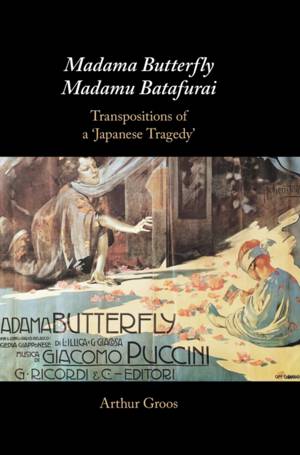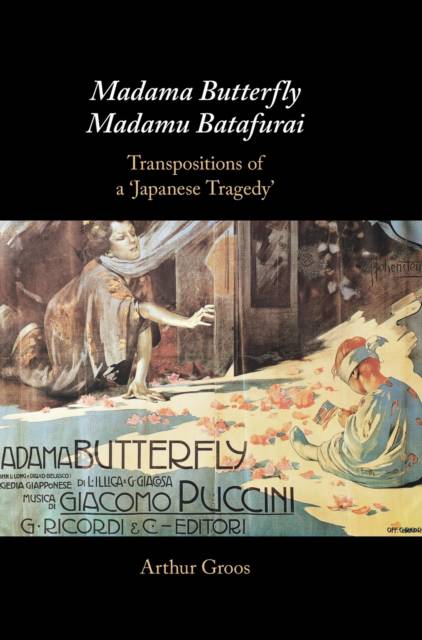
- Afhalen na 1 uur in een winkel met voorraad
- Gratis thuislevering in België vanaf € 30
- Ruim aanbod met 7 miljoen producten
- Afhalen na 1 uur in een winkel met voorraad
- Gratis thuislevering in België vanaf € 30
- Ruim aanbod met 7 miljoen producten
Zoeken
Madama Butterfly/Madamu Batafurai
Transpositions of a 'Japanese Tragedy'
Arthur Groos
Hardcover | Engels
€ 168,95
+ 337 punten
Omschrijving
Puccini's famous but controversial Madama Butterfly reflects a practice of 'temporary marriage' between Western men and Japanese women in nineteenth-century treaty ports. Groos' book identifies the plot's origin in an eye-witness account and traces its transmission via John Luther Long's short story and David Belasco's play. Archival sources, many unpublished, reveal how Puccini and his librettists imbued the opera with differing constructions of the action and its heroine. Groos's analysis suggests how they constructed a 'contemporary' music-drama with multiple possibilities for interpreting the misalliance between a callous American naval officer and an impoverished fifteen-year-old geisha, providing a more complex understanding of the heroine's presumed 'marriage'. As an orientalizing tragedy with a racially inflected representation of Cio-Cio-San, the opera became a lightning rod for identity politics in Japan, while also stimulating decolonizing transpositions into indigenous theatre traditions such as Bunraku puppet theatre and Takarazuka musicals.
Specificaties
Betrokkenen
- Auteur(s):
- Uitgeverij:
Inhoud
- Aantal bladzijden:
- 296
- Taal:
- Engels
Eigenschappen
- Productcode (EAN):
- 9781009250672
- Verschijningsdatum:
- 16/02/2023
- Uitvoering:
- Hardcover
- Formaat:
- Genaaid
- Afmetingen:
- 170 mm x 244 mm
- Gewicht:
- 671 g

Alleen bij Standaard Boekhandel
+ 337 punten op je klantenkaart van Standaard Boekhandel
Beoordelingen
We publiceren alleen reviews die voldoen aan de voorwaarden voor reviews. Bekijk onze voorwaarden voor reviews.








